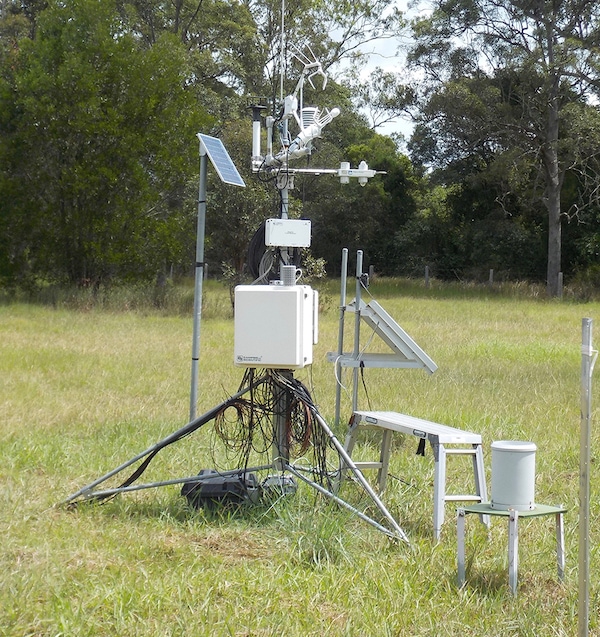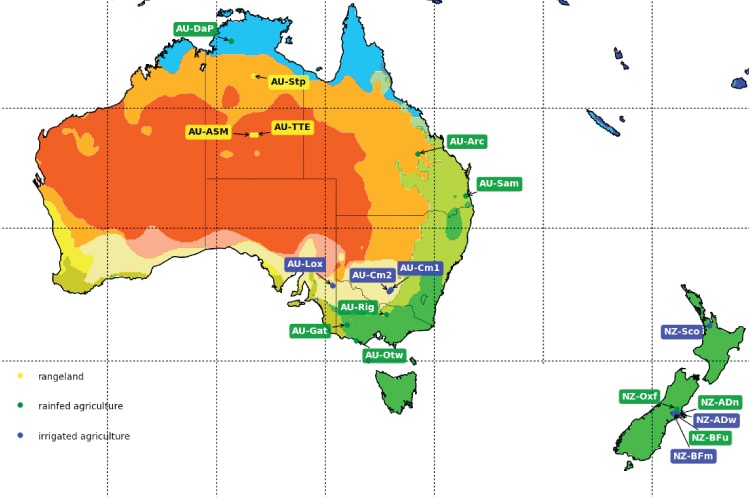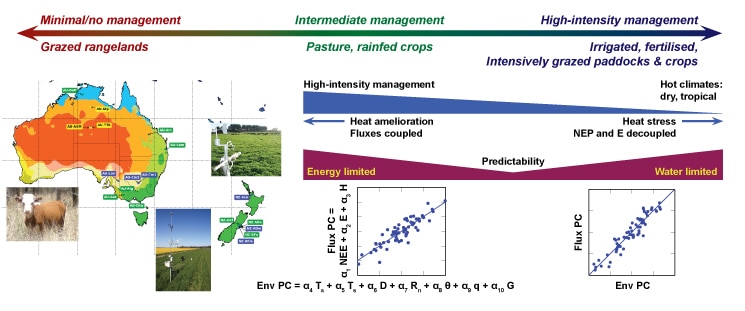New science using TERN assesses the impact land management intensity has on carbon stocks and flow, plant water use and heat stress. Read the results from 19 farm sites across Australia and New Zealand and find out how they could help agricultural enterprise optimise without compromising the environment.
The newly published research of TERN landscape research significantly improves our understanding of how land management intensity in agricultural landscapes impacts plant productivity, water use and heat stress (or carbon, water and energy fluxes) and environmental conditions such as air temperature and soil water content.
“We have a good understanding of fluxes in Australia’s ‘natural’, or minimally managed, landscapes and how these exchanges influence local water and carbon budgets, but much less knowledge of our ‘managed’ landscapes, particularly those of high intensity management practices.”
Camilla Vote, Charles Sturt University

Because of this knowledge gap, Dr Vote suggests that we’re missing out on opportunities to increase carbon uptake, decrease water use, increase soil carbon and improve nutrient status as well as improve economic productivity. And, ensure the optimisation of agricultural enterprise without compromising important environmental factors such as soil health.
“This study has, in the very least, given us a starting point that enables us to more confidently predict how agricultural systems will respond to environmental drivers.
“In terms of greenhouse gas accounting, we also need to consider fluxes of methane and nitrous oxide. And sure, there are many other factors to consider in agricultural carbon accounting, such as the direct export of carbon from the system as biomass, burning of crop stubble etc., however the results of this study may serve to better inform current greenhouse gas accounting methods for the agricultural sector in Australia and overseas.”
Camilla Vote, Charles Sturt University

Key research findings
One of the key findings of the work is that high-intensity land management, such as irrigated cropping, can reduce plant (pasture/crop) heat stress, says Dr James Cleverly of the University of Technology Sydney.
“As expected, we found that irrigation and fertilisation practices had a positive coupling effect between net ecosystem productivity and evapotranspiration, meaning that in these landscapes an increase in photosynthesis can be maintained under increasing heat through evaporative cooling of leaves.”
“By contrast to this, in tropical and hot desert landscapes with less intensive land management, such as rangeland grazing, vegetation was able to avoid stress by reducing photosynthesis during periods of extreme heat. In scientific terms, increases in ecosystem productivity were synchronised with decreases in sensible heat flux.”
James Cleverly, University of Technology Sydney
By quantifying this ‘coupling’ between productivity, water use and heat, the research provides important information that may facilitate further improvements in water resource management in agricultural landscapes.
Another key finding is that management affects only some environmental factors, while others are beyond our control. Additionally, these interactions varied from location to location across Australia and New Zealand.
For example, irrigation and fertilisation at one dairy farm affected soil moisture and soil temperature without impacting other environmental factors such as air temperature or humidity. But at another dairy farm, irrigation influenced air humidity and the loss of heat into soil.
Big Data from 19 farm sites
The international team of researchers used a novel ‘wavelet statistical approach’ to analyse measures of land-atmosphere fluxes (net ecosystem exchange of carbon, evapotranspiration and sensible heat flux) and seven environmental factors (e.g. air temperature, soil water content) on 19 farm sites across Australia and New Zealand.
Data from TERN’s Alice Mulga SuperSite in the Northern Territory and Samford Peri-Urban SuperSite in Queensland were used in addition to data from 17 other flux sites operated by the OzFlux research community around Australia.







